The DiTV 1000 was one of the first digital cable boxes released in the UK, and one of the first DVB-C box’s with a built in DOCSIS cable modem.
The DITV1000 was also used by Telewest, where it was branded as the Di1000T, however the internals should be the same, although there may be differences in the memory configuration

Two card slots are present, with the smartcard slot visible behind the front cover flap. Front panel buttons can be used to change channel, move and navigate the on screen cursor and access various different menus.

Power – Mains input
RF Output: Outputs a modulated RF signal to a TV
RF Input: In from antenna
Audio Output: Outputs audio to a HiFi system, useful for radio
Scart Ports: Supports compostie and RGB, and VCR passthrough
IR Remote In/Out: To connect external IR blaster devices, Not officially used but is power enabled
Ethernet Port: Originally used to provide broadband services to a computer using the internal DOCSIS modem, redundant as cable modems are now preferred.
Serial Port: Labelled as RS232, Not Officially used
Pararell Port: Labelled is IEEE1284, Not Officially used
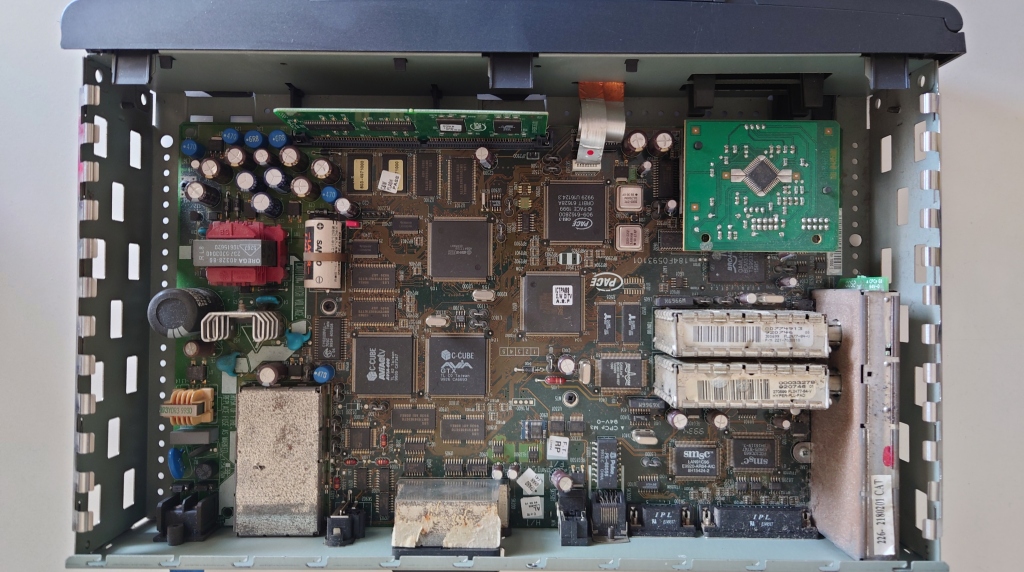
Internals of the DITV 1000, note the various amount of processors in this box, no wonder it runs hot.
It kind of reminds me of the Sega Saturn, which itself had 8 processors for various different tasks. Remember this box has to function as a high end STB and a cable mode, and still has to remain the size of a typical VCR.
Note the lack of a fan, since these box’s run hot they would have benefitted greatly from an additional fan to extract the heat generated by the components. Whilst this would have increased the cost of the stb slightly, the increase in reliability would have paid for itself in time, remember ntl had to pay installers to come out and replace the box once it had failed, and then had to be sent back to Pace in order to be diagnosed and repaired. Also customers are generally poor at maintaining AV equipment, with many putting the boxes in Tv cabinets and stands with closed doors, often on top of a VCR or DVD player that already generates heat. It’s no secret that heat is the main reason electronic components die early, and this was before the days of thermal throttling.

View of the memory and flash chips, with the memory module. Interesting to note the two flash banks, one labelled C&W Flash and the other as Download, wonder if these store two separate images? One for main use and the other for backup?

View of the bottom right side, showing part of the PSU
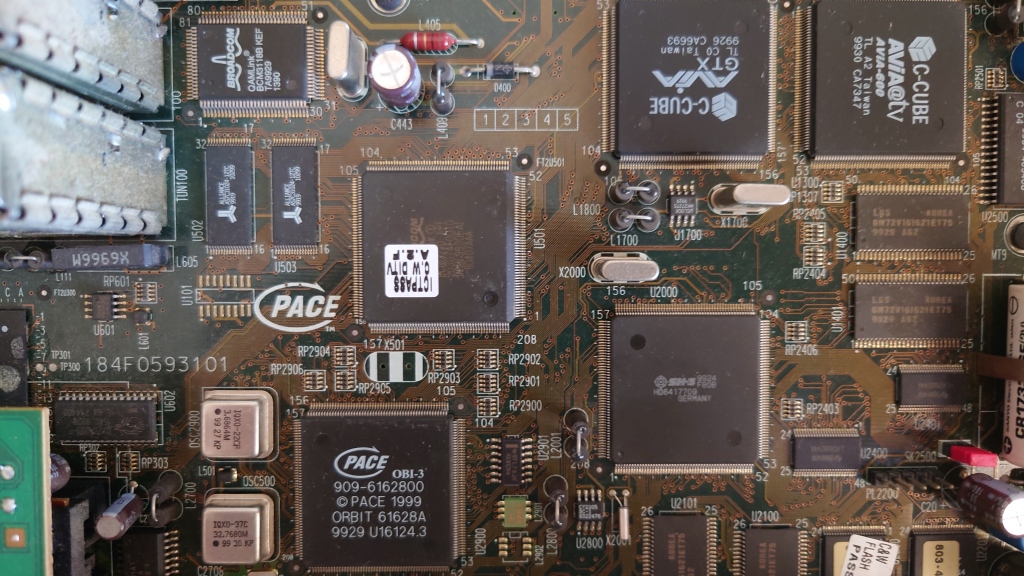
The main set of processors, from top left working down
Broadcom QAMLink BCM3118BKEF – QAM & DVB Decoder
C-Cube AViA GTX – Graphics processor
C-Cube AViA-600 – MPEG2 decoder
Broadcom BCM3220KPF – DOCSIS Modem
Hitachi SuperH/SH3 Processor – Central Processing Unit

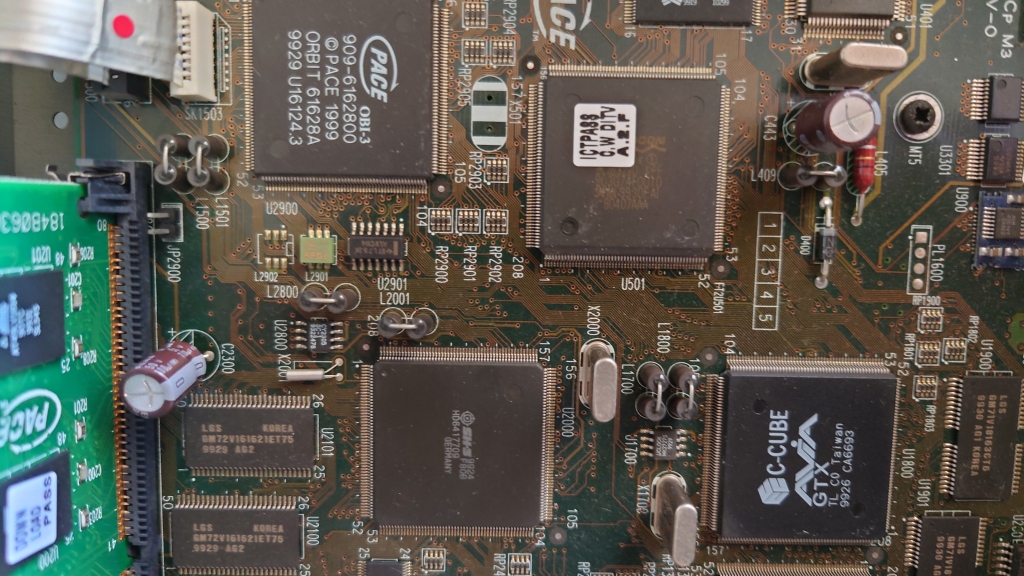
Another view of the main processors

Update Process
So looking into the update process for the Ditv1000 I came to a plausible theory, When pace had written the initial loader for the stb, they neglected to include a function to check for a firmware update on boot up, which the later boxes did support and do. Typically when you boot up a cable box, it checks the default frequency for a valid netID and if there are any updates available for that stb, and the loader application for the ditv1000 may not have done that.
Since the loader is present on some sort of ROM medium and its likely Pace had already manufactured the software on the ROM chips themselves, they did not want to write off these chips since it would be a considerable expense, instead they included a workaround in the software loaded in flash, where once the operator had released a new update, a signal flag would be sent out within the transport stream, of which the software would then corrupt itself in an extent that the loader would fail to boot (possibly by failing a checksum) and would then trigger the download process.
To force an update on the Ditv1000, Hold the power button upon powering on the box from the mains power, release the power button when OHAY appears on the screen. then press

Update Process, this is displayed after you enter the key sequence

Diag Screens
To access, hold the Up/Down front panel buttons together after powering the box from the mains, release once DIAG appears on the front panel.

Default Frequency settings

Hardware version information and the loaded software information
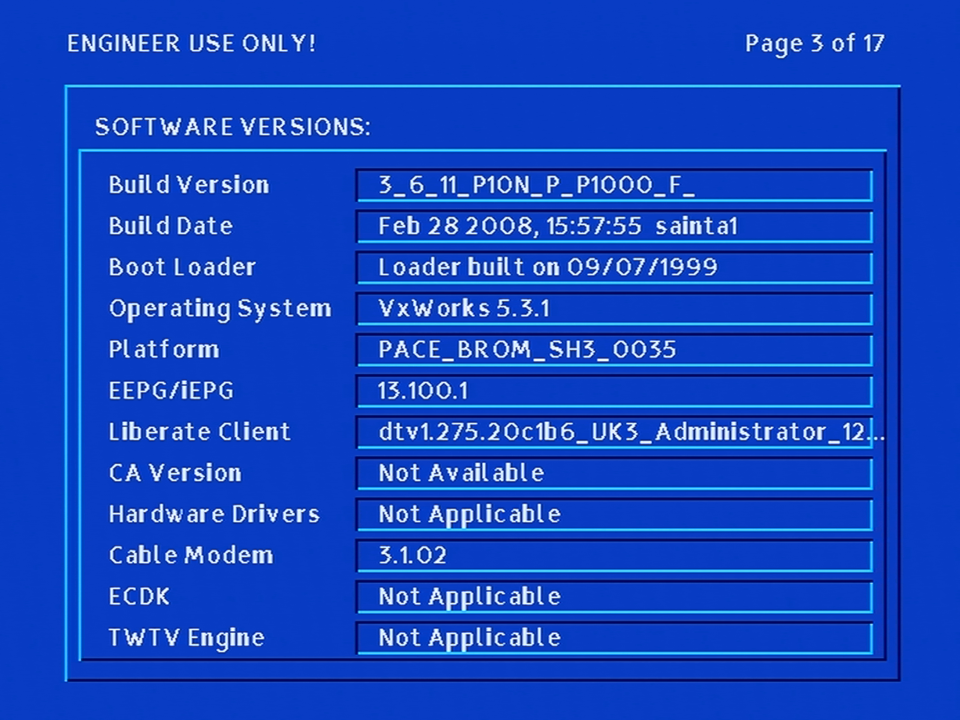
Software versions for various components
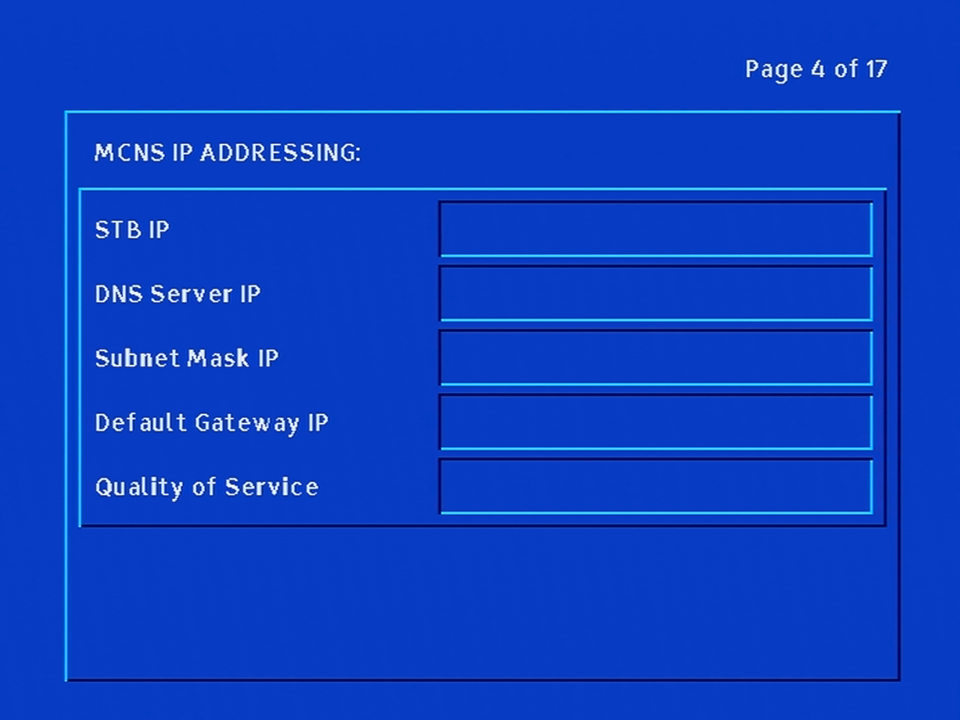

Date & Time Information
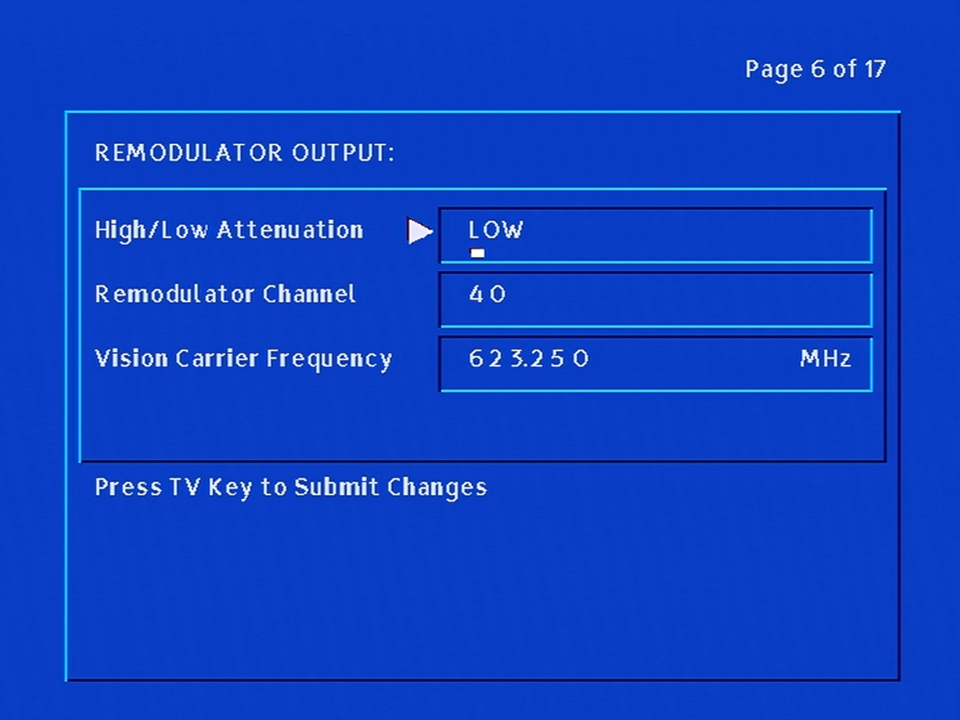

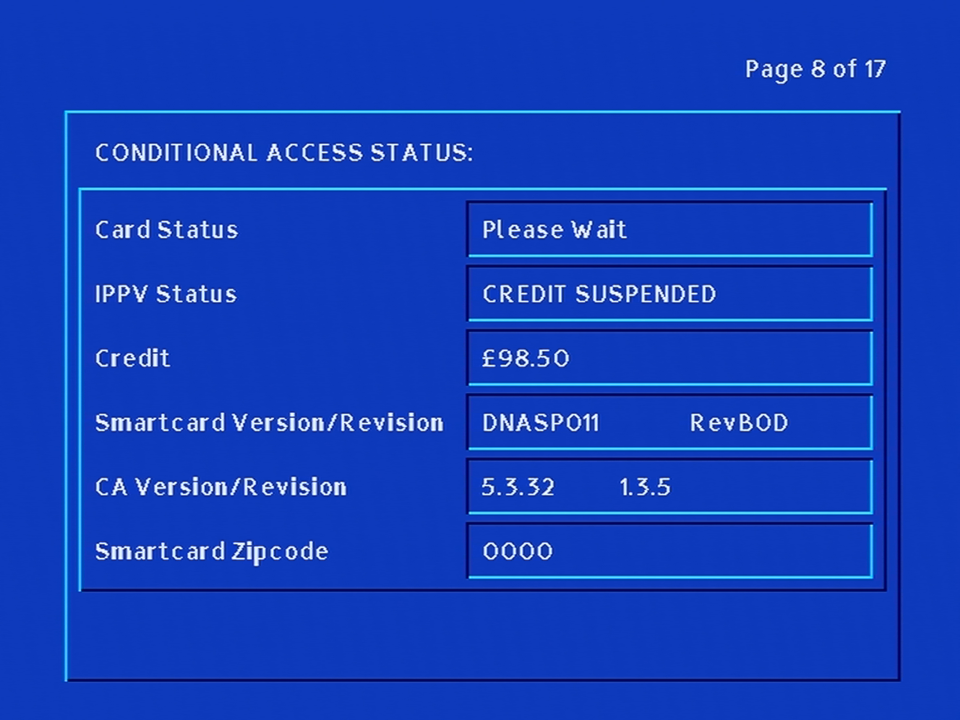
That’s a lot of credit

The bootloader status
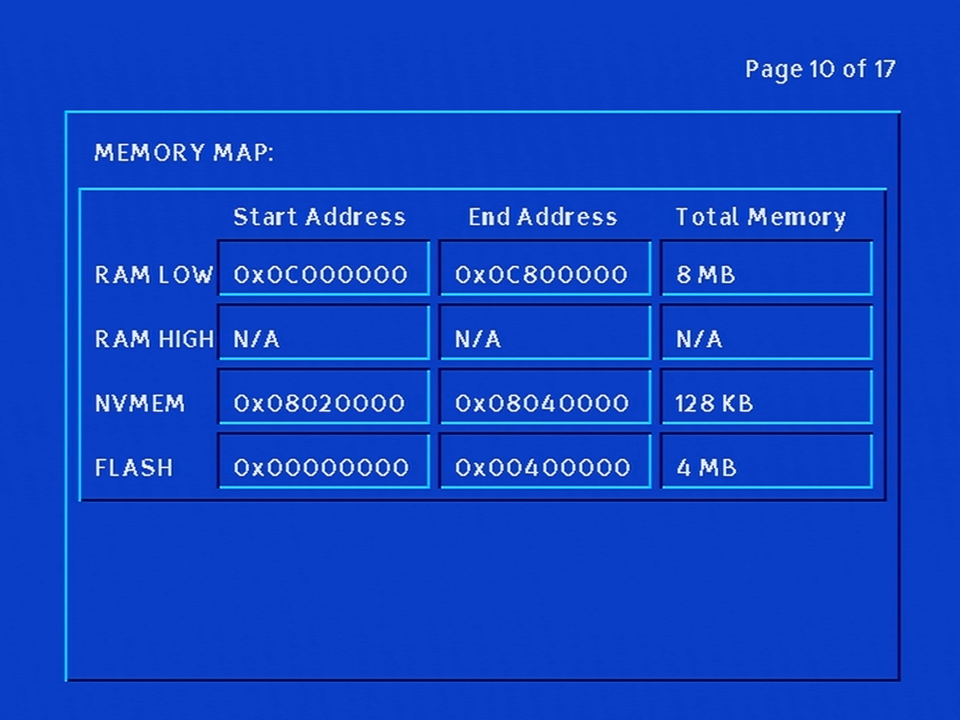
Memory information for both RAM and Flash memory

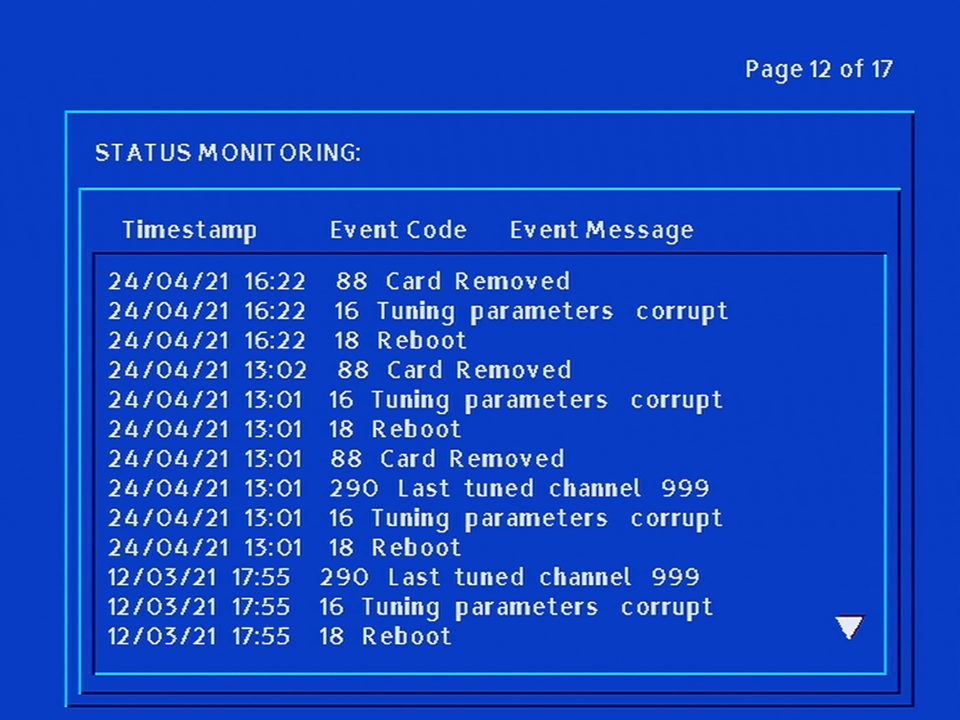
Status and a list of logs and events
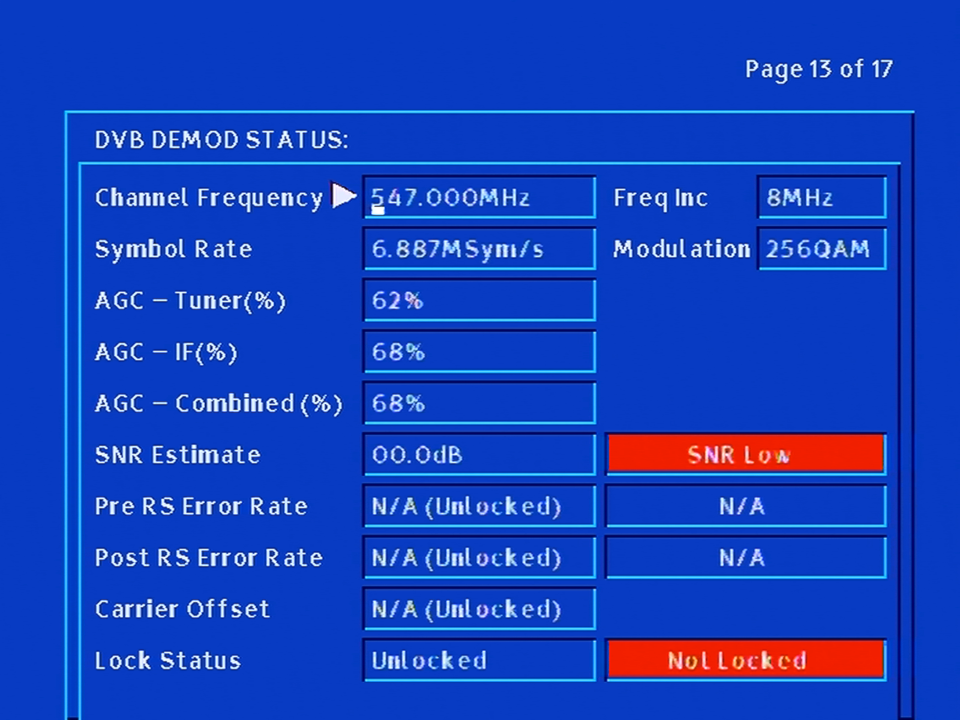
Signal information for the DVB tuner
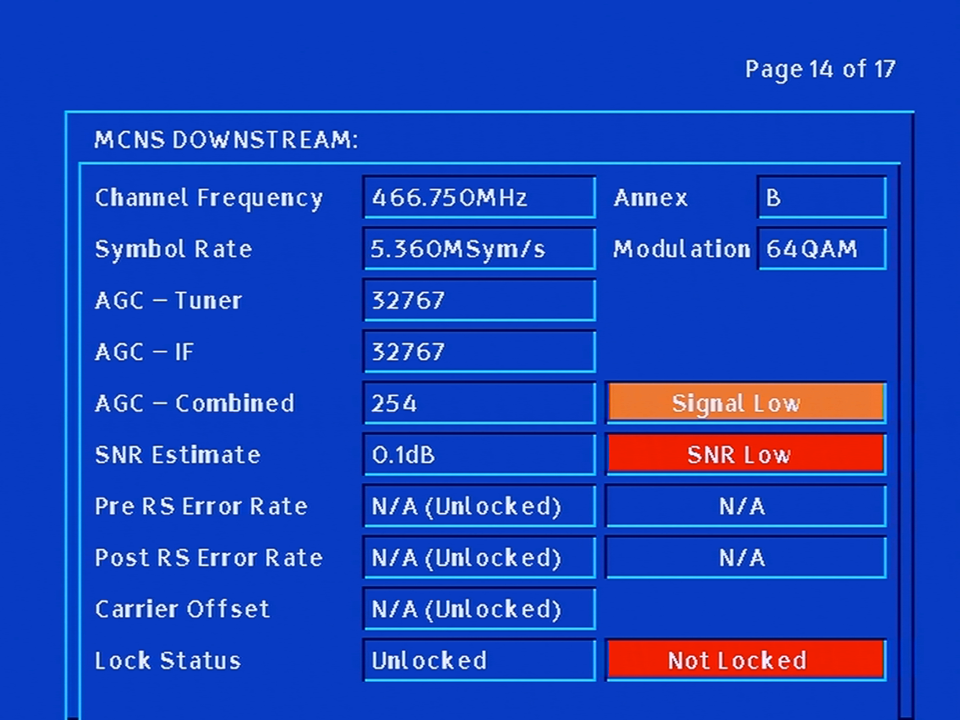
Downstream signal information for the cable modem
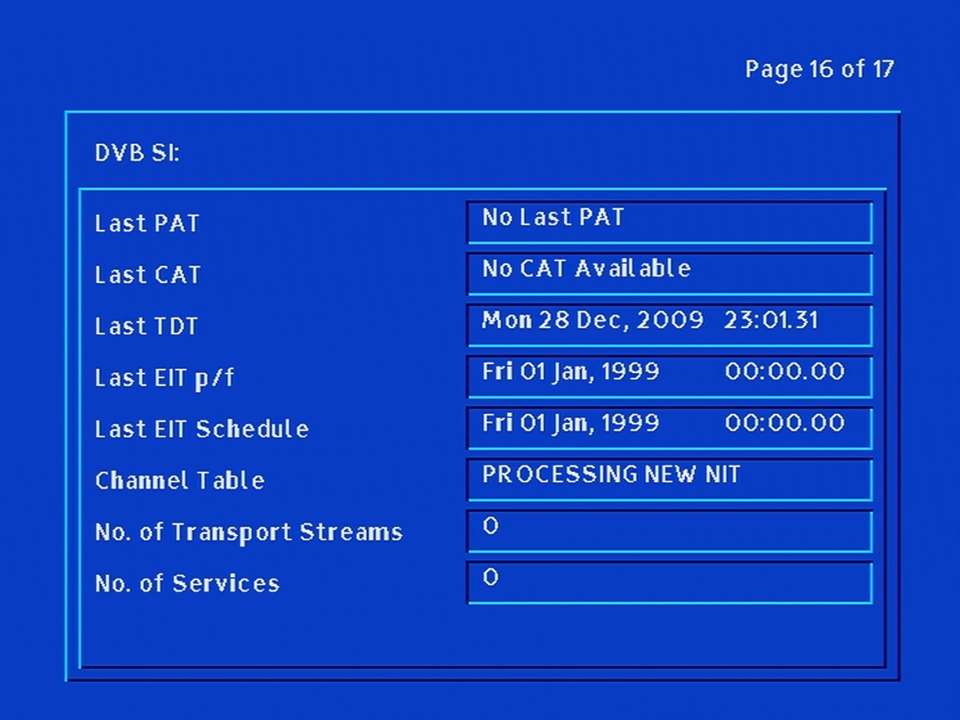
Information for the DVB Signal Information that is currently being received
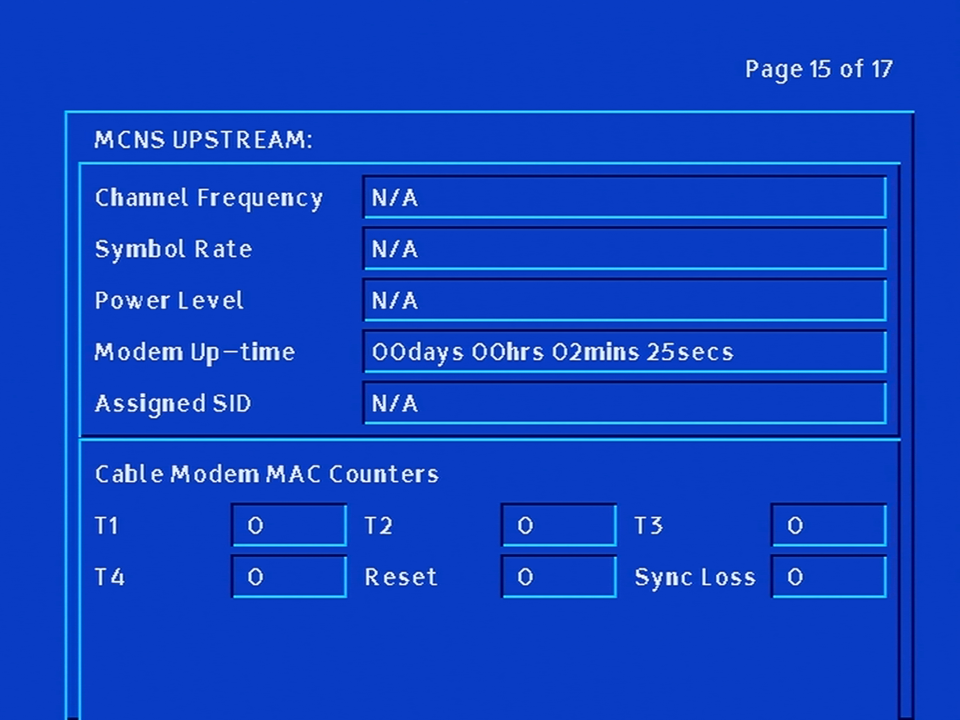
Cable modem upstream
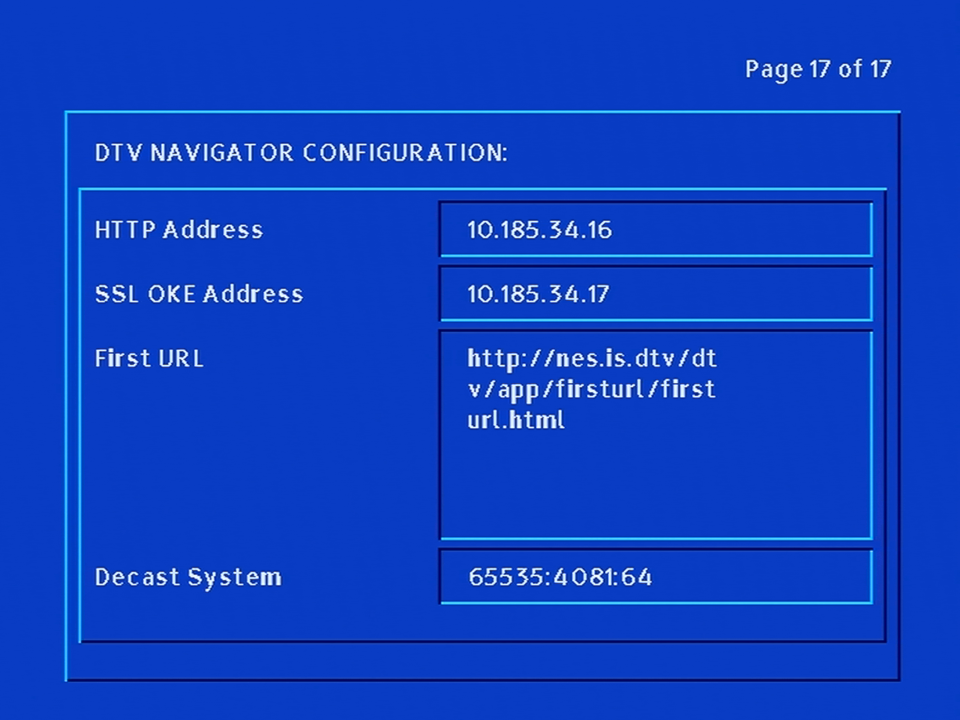
Front LCD Display
There are three light’s to the right o the LCD display which indicate the following:
- The top light indicates power is being received by the stb
- The middle light indicated the return path status of the modem, this light should be steady which indicates it is connected, flashing means the modem is attempting to connect – also means interactive services are unavailable until the stb connects.
- The bottom light is for the remote control, and light up when a command has been received
| Message | Meaning |
|---|---|
| PACE | Appears when the stb is powered on |
| —- | Liberate middleware is initialising, normal part of boot up |
| LAIT | Wait, The stb is preparing to update |
| OHAY | Appears when you hold the power button down upon boot, stb waiting for a front panel command |
| ERAS | Erasing flash |
| FLAS | Flashing memory, part of the update process |
| GOOD | Checksum passed, last part of the update process |
| ERRX | Error code, where X means the error number |
DigDebug
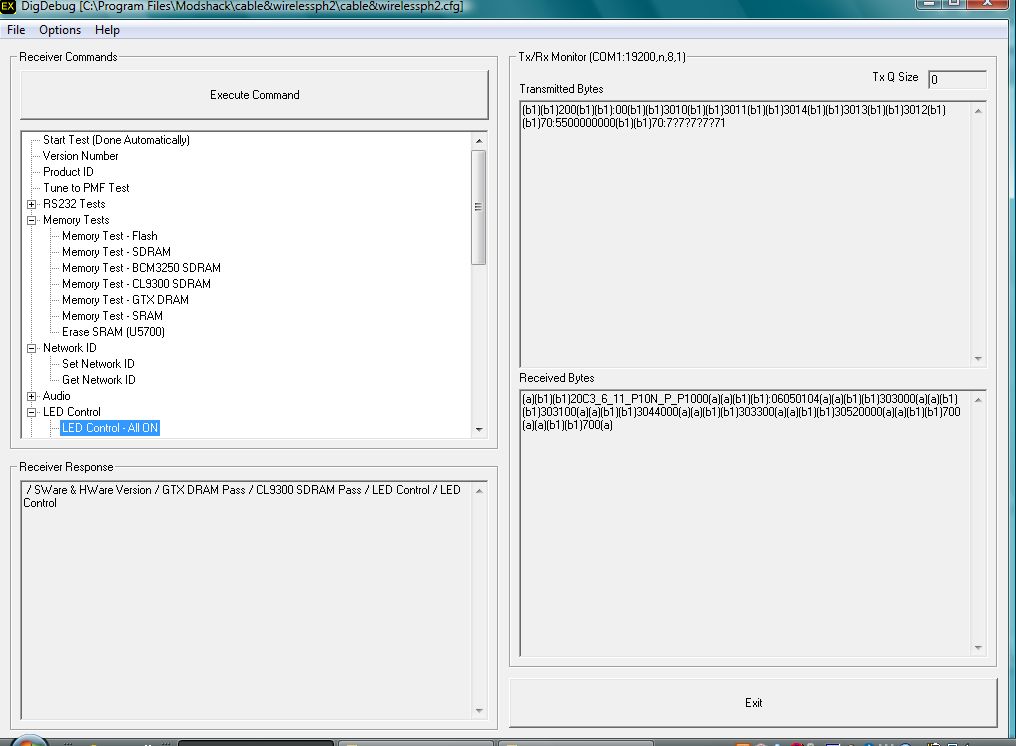
DigDebug can be used to test various aspects of the hardware and can be triggered by connecting an RS232 extender cable to the box, and booting whilst DigDebug is active. Whilst connected, PL:03 is displayed on the front LED display.
Additional tests can be completed for the various pools of DRAM used for the CPU/Decoder/Demodulator and a test pattern can be displayed.

